

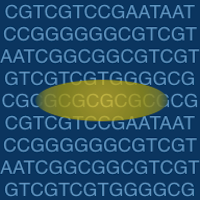
DNA sequencing is the process of determining the order of nucleotides in a DNA molecule. Next generation sequencing (NGS) methods achieve this aim at unprecedented speed and very low cost. Entire genomes or transcriptomes can now be sequenced in a matter of days or weeks using 'second generation' sequencing methods: these involve the massively parallel sequencing of high number of spatially separated, amplified short DNA fragments.
The NGS facility is equipped with several second-generation sequencing platforms to facilitate biological and medical research in the areas of genomics, transcriptomics, epigenomics and metagenomics.
Single CellGenomicsTranscriptomicsEpigenomicsMetagenomics
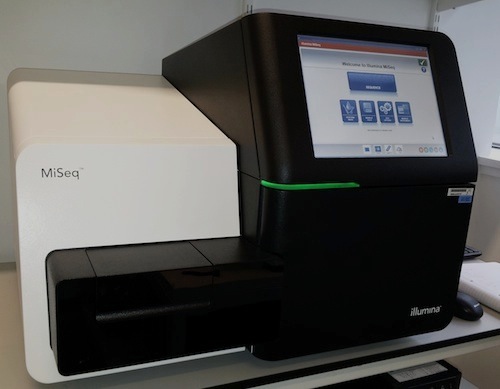
Free consultation on the experiment design and data analysis.
Single-cell Gene Expression
From a sample of several thousand cells in suspension this will provide information on the population structure by clustering cells according to distinct gene-expression profiles. Every cell will be allocated to a cluster and details of between-clusters differential expression will be revealed.
Single-cell ATAC
Generates information on the population structure by clustering nuclei according to distinct open chromatin profiles and enriched transcription factor binding site motifs
Single-cell Multiome ATAC & Gene Expression
Generates paired ATAC and gene-expression libraries from a single cell-nucleus, allowing for simultaneous characterisation of a population of thousands of nuclei in the context of gene expression and open chromatin profiles.
Single Cell Immune Profiling
10X Chromium-based single-cell immunoprofiling allows to simultaneously investigate the immune repertoires of T- and/or B-cells by identifying V(D)J segments of T-cell and/or B-cell receptors and gene expression in the same cell for thousands of cells. Cells could be clustered based on the expression profile and the most prevalent TCR/BCR clonotypes identified and mapped.
Spatial Gene Expression
The 10X Chromium-based spatial gene expression is conceptually similar to single-cell expression profiling except that thousands of analysed transcriptomes come from thousands of spatially separated locations on the small tissue slice rather than from thousands of cells in the sample.
Bioinformatics support (collaborative basis)
Please see in the Cell Preparation Guide for information for how to prepare your cells.

Free consultation on the experiment design and data analysis.
Whole genome sequencing (WGS)
Used for investigating single nucleotide polymorphisms, short insertion deletions and copy number variance for the whole genome. We offers whole genome sequence any organism from bacteria to human.
Whole exome sequencing (WES)
Can be more cost-effective approach than whole genome sequencing. As with whole genome sequencing, it is used to investigate single nucleotide polymorphisms, short insertion deletions and copy number variance, but only for select regions coding regions of the genome.
Targeted panel
Re-sequencing is an effective method for analyzing your selected gene(s) of interest. Targeting panels for many diseases are available off the shelf. We can also advise on the design and sourcing custom designed capture panels.
Bioinformatics support (collaborative basis)
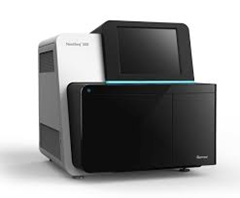
Free consultation on the experiment design and data analysis.
Transcriptomics
Qualitatively and quantitatively measure changes in transcription in your system caused by disease, drug treatment, gene knockout etc. We have expertise in successfully undertaking transcriptomics projects using low input amounts of RNA and low quality RNA with extremely low RIN numbers, for example from formaldehyde fixed paraffin embedded samples.
Bioinformatics support (collaborative basis)

Free consultation on the experiment design and data analysis.
Epigenomics
Studies the chemical modifications to the genomic DNA and histones affecting how tightly the chromatin is wound affecting its accessibility and higher order genomics DNA organisation. Whilst epigenetic modifications do not alter the nucleic acid sequence, we use various sequencing-based techniques that can detect them indirectly.
Bioinformatics support (collaborative basis)

Free consultation on the experiment design and data analysis.
Metagenomics
Is the study of microbial component of an ecosystem. We offer targeted rRNA 16s subunit sequencing, custom targeted genes and whole meta-genome sequencing.
Bioinformatics support (collaborative basis)
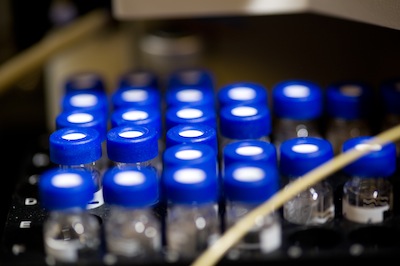
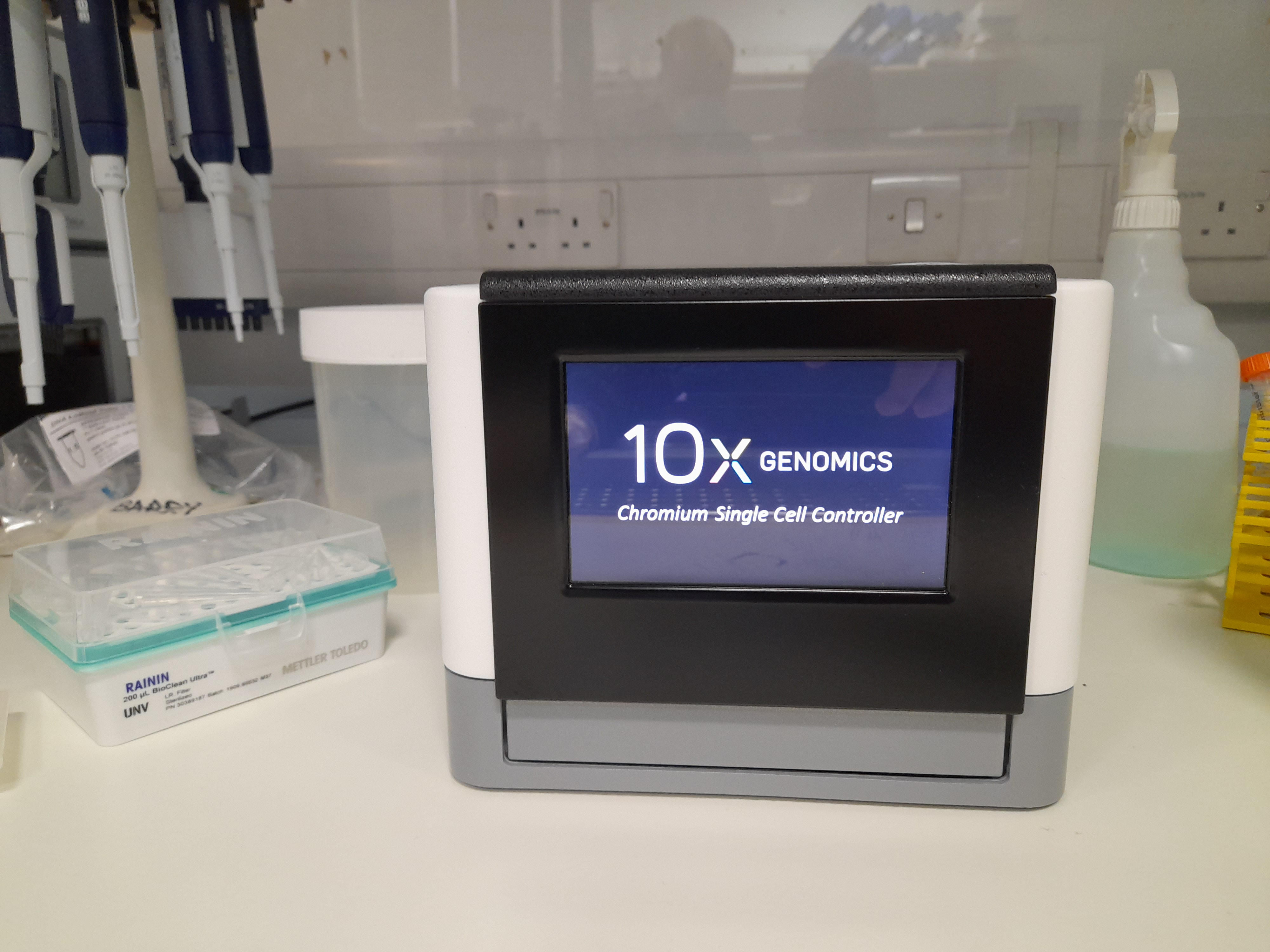
RNA sequencing experiment with 4 replicates of 5 groups (total 20 samples) where PolyA selection is requested and is sequenced using 2x 100 bp reads and 30M reads per sample on the NextSeq 2000. Researcher is provided with the raw data in FastQ format as well as the differential expression lists for each detected gene. Total cost £7,178.
Single cell sequencing project consisting of 4 samples in a single batch, where there are 6,000 cells per sample and the researcher requires 3,000 reads per cell, on average (totalling 18 million reads). The researcher is sent the raw data in FastQ format as well as the output from Cell Ranger. Total cost £6,934
Preparing SamplesSending SamplesAnalysing SamplesOther
We only accept samples that have already been extracted because there are a wide variety of extraction methods available and the researcher in charge of those samples is normally the best individual to select the optimal method. Additionally we do not have the facilities nor the resources to test or extract these different sample types.
RNA Sequencing
General: We prefer Column RNA extraction methods such as the Qiagen RNeasy kit. If your tissue requires Trizol extraction then we suggest that you clean up the RNA through a column post extraction.
For PolyA Selection library prep: DNase treatment of your samples is recommended e.g. using i.e Qiagen DNase 1. We require 1µg - 4µg of total RNA with RIN>=8.0. Ideally we would like 20µl of RNA with a concentration between 50 and 200 µg/µl.
For Ribosomal Depletion library prep:(only possible for human, mouse , rat and possibly plant RNA) DNase treatment is essential. We require a minimum of 1µg of total RNA with a minimum concentration of 30ng/µl. This method is more amenable to partially degraded RNA. If you have other species you can perform ribosomal reduction yourself and we can prepare the library from this. For this option we need a minimum of 20ng of ribisoml depleted RNA.
For small RNA library prep:it is essential to make sure that the RNA extraction method retains small RNA e.g. using miRNeasy Mini Kit. Trizol extraction is good at retaining small RNA but you must ensure that the RNA is clean with a good 260/230 ratio of about 2. We require 2µg - 4µg of total RNA with RIN>=8.0.
Genome Sequencing
For our standard genome sequencing we require 1ug of clean genomic DNA with a 260/230 ratio of about 2.0. We recommend column purification. If you have much less sample we have other library prep options we can discuss with you. Please contact us for more information.
ChIP Sequencing
At present we require a minimum of 3ng of ChIP material tested with RT PCR for enrichment. The DNA needs to be clean preferably through a column clean up.
If you have problems reaching these requirements please contact us to discuss your options.
An absolute minimum of three biological replicates per sample is required. This should be increased to six or more replicates where sequencing is carried out on tissues (primary samples) where variability is greater.
Yes. But you must provide us with a minimum concentration of 4nM provide details on the concentration in ng/ul and a rough estimate of the library size and how it was prepared and any indexes if present details on the library. We will QC your libraries using RT-PCR before proceeding with sequencing. If any fail you will be contacted to provide replacements. If intending to prepare your own libraries please contact us first to discuss.
We kindly ask that the sample identification codes be sent along with the samples in Microsoft Excel® table using the appropriate sample submission form. Please include one printed list with the samples and also e-mail the file to our Executive Assistant at gp-sequencing@glasgow.ac.uk. In the table please include a unique code for each sample, as well as their position in the box or plate. We will run a batch of samples only if the samples and the sample list are matched. Please label all sample vials or plates clearly, using indelible ink.
Screw-capped would be ideal for transportation as they are less likely to leak. We will only accept samples that are supplied in a labelled sample box (e.g. 15cm x 15cm) or bag — this not only makes them easier to store for us, but also ensures they neither get mixed up in transit nor become difficult to find when we receive them. Please also label each tube clearly. When you fill in the sample submission form, please use the same labels as are on the tubes. For longer journeys especially, we would also suggest wrapping parafilm around the screw-top vials.
Before sending your samples please fill in the NGS submission form, available from our Facility Administrator. This ensures that we have all the required information about your sample, including the analysis plan, and also makes sure that we are able to run the samples in a random order. It is important that the labelling on the sample tubes matches the labelling on the submitted sample file. Samples that are travelling to the facility from outside the University should be supplied in screw-capped tubes, to avoid leakage during transit.
Please ask us about recommended couriers for international delivery.
Please note that it is the responsibility of the user to ensure that the samples arrive at the facility. We would advise users to track the progress of their package daily.
Our postal address is:
Molecular Analysis - NGS
Room B4.09 Joseph Black Building
College of Medical, Veterinary & Life Sciences
University of Glasgow
G12 8QQ
UK
Please enclose a printed copy of your sample submission form with your samples, and alert our Facility Administrator to let us know that the samples are on their way.
Important: Please follow the correct procedure given above for packaging the samples.
University of Glasgow users can deliver the samples to the Metabolomics Laboratory using the internal mail system. It is not advised to send samples on a Friday afternoon as they might not reach the facility until the following Monday morning.
To prioritize the delivery of your samples, please mark the box clearly to indicate that it contains dry ice. Please enclose a printed copy of your sample submission form with your samples, and alert our Facility Administrator to let us know that the samples are on their way.
Yes. If you are delivering your samples in person then please confirm a delivery time with a member of staff before travelling to the laboratory. As the building reception is manned only from 9:00–15:30, please do not attempt deliveries outside these times.
If you are happy to receive the raw reads then yes, we will deliver reads in the fastq format. If you require your data in another format please let us know at the outset of your project.
Example fast record for a single read:
@NS500205:44:H3JNFBGXX:1:11101:4908:13589 1:N:0:1
GTCTTCTTGGGGGTGGCTGCTGCCTTCTCCTCCTCTGAGTCATCACTGCTACTGCTGCTG
+
AAAAAFFFFFFFFAFFFFFFFFFFFFFFFFFFFFFFFFFFFFFFFFFFFFAFFFFFFFF7
The cost depends on the type of work you are interested in, e.g. RNAseq, ChIPseq, 16S. It also depends on the number of samples and the amount of analysis required.
The section above provides indicative costs for two typical projects
Depending on the parameters you chose, the cost includes QC of samples, library preparation, library QC, sequencing of the samples and conversion of raw data.
The cost depends on the type of work you are interested in, e.g. RNAseq, ChIPseq, 16S. It also depends on the number of samples and the amount of analysis required.
The analysis is dependant on your experiment and can be tailored to your requirements. Ideally, this will be discussed and agreed prior to commencing the project.
The length of time depends on the type of work you are interested in, e.g. RNAseq, ChIPseq, 16S. It also depends on the number of samples and the amount of analysis required. You will be given a quote at the outset of the project.
The format of the analysed data is dependant on the type of analysis performed. If required, you will be instructed on how to interpret your data when it is delivered.
Only in very specific circumstances. In order to provide a high quality facility, it is essential that we limit access to the instrumentation to a handful of expert users.
Only in very specific circumstances. In order to provide a high quality facility, it is essential that we limit access to the instrumentation to a handful of expert users.